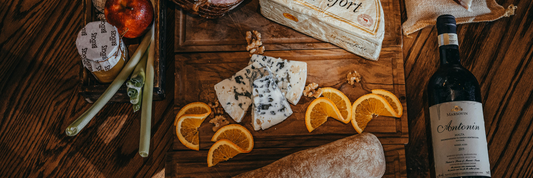Wine labels have evolved far beyond their primary purpose of identifying the bottle’s contents. In 2025, wine bottle labels are transforming into dynamic, sustainable, and interactive branding tools that capture consumer attention. From minimalist designs to advanced technologies, wine labels now play a pivotal role in storytelling, sustainability, and engagement. This article explores the most exciting trends reshaping wine bottle labels and how they influence both the industry and wine lovers alike.
- The Ultimate Guide to Wine Bottles: Types, Manufacturing, and How to Choose the Perfect Bottle for Any Occasion
- A Complete Guide to Wine Bottle Shapes and Their Significance
Key Wine Bottle Label Trends in 2025
1. Minimalist and Elegant Designs
The trend toward simplicity reigns supreme in 2025. Wineries are increasingly embracing uncluttered labels that highlight the brand name and logo with sleek typography. The removal of traditional elements like capsules enhances the clean, modern aesthetic. These labels appeal to consumers seeking sophistication and elegance.
Examples:
- Several premium wineries have adopted capsule-free bottles to showcase their labels better.
- Elegant serif fonts paired with monochromatic palettes create timeless designs.

2. Sustainable and Eco-Friendly Labeling
Sustainability remains a key focus in the wine industry. Labels are now made from recyclable materials and printed using low-impact processes. These eco-friendly designs cater to environmentally conscious consumers and align with global efforts toward sustainability.
Examples:
- Wineries incorporating compostable materials for their labels.
- Brands highlighting their carbon-neutral certification directly on the bottle.
Benefits:
- Reduces waste and appeals to eco-conscious buyers.
- Strengthens the brand’s commitment to sustainability.
3. Vintage and Nostalgic Design Elements
Retro aesthetics are making a comeback, with classic fonts and old-school illustrations gracing modern wine bottles. These nostalgic designs resonate with tradition-oriented consumers who appreciate the timeless charm of vintage visuals.
Why It Works:
- Creates an emotional connection by invoking memories of heritage and craftsmanship.
- Highlights the winery’s dedication to tradition.

Technology in Wine Labels
Smart Labels with QR Codes and NFC Technology
Integrating QR codes and NFC chips offers a seamless digital experience. Consumers can scan labels to access tasting notes, brand stories, or even health information, enhancing transparency and engagement.

Augmented Reality (AR) Wine Labels
AR-enabled labels allow customers to interact with a wine's story via smartphones, making the shopping experience more engaging.
Examples:
- AR animations that share the history of the winery.
- QR codes leading to curated food-pairing recommendations.
RFID and Traceability
RFID technology helps prevent counterfeiting and enhances supply chain transparency. By using RFID chips, wineries ensure authenticity and offer consumers insights into the wine’s origin.
Design Elements Defining 2025 Wine Label Trends
Color Trends
Soft earth tones, rose gold, and minimalist palettes dominate, reflecting elegance and eco-friendliness.
Typography Trends
Brands are blending bold fonts for modernity with delicate typefaces to emphasize sophistication.
Textured and Tactile Labels
Embossed or debossed textures create a sensory impact, making bottles feel as premium as their contents.
Artisanal and Handcrafted Aesthetics
Hand-drawn elements and rustic styles communicate authenticity and regional pride, resonating with consumers who value originality.

Region-Specific and Localized Labeling
Wineries increasingly reflect their geographical roots on labels, incorporating local symbols, languages, and traditions.
Regulatory Trends Impacting Wine Labels
Health and Wellness Transparency
Consumers demand ingredient lists, nutritional content, and allergen information, with regulations in many regions now mandating such disclosures.
Sustainability Certifications
Labels showcasing organic, biodynamic, or low-sugar certifications gain trust and loyalty among health-conscious buyers.
Benefits of Following Wine Bottle Label Trends
Modern wine label trends are more than just visual updates—they drive consumer engagement and loyalty. Wineries leveraging these trends see improved sales, stronger brand connections, and increased appeal in competitive markets.
Conclusion
Wine bottle labels in 2025 reflect the intersection of tradition, innovation, and sustainability. Whether through minimalist designs, advanced technologies, or artisanal craftsmanship, labels have become an essential tool for storytelling and consumer engagement. Staying ahead of these trends allows wineries to captivate audiences and create lasting impressions in the ever-evolving wine industry.




